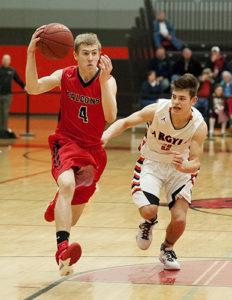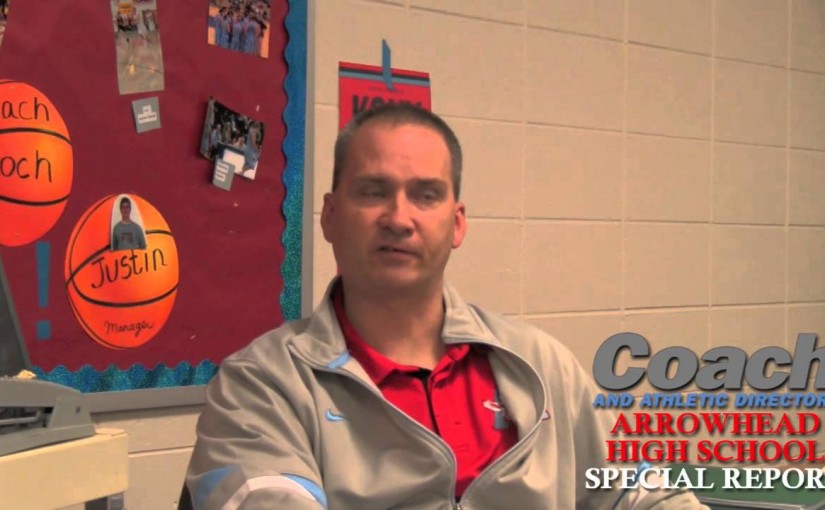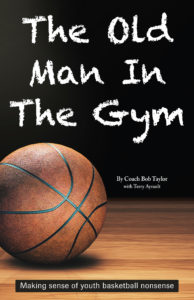Teaching your players to get tough
The most important virtue for any basketball player is talent. But what’s talent without the competitive spirit, or toughness, that consistently motivates your team and drives it to victory?
Teaching your team to play tough and battle during every minute of every game is easier said than done, but it’s a habit that can be taught with the right approach. Point Guard College’s Dena Evans said taking time to educate your team on the benefits of playing hard can pay dividends throughout the season, especially during those intense match-ups when possessions and rebounds make all the difference.
“We want players that will compete,” Evans said. “I think there are a lot of players that will play hard and a lot of coaches that reinforce and harp on kids about playing hard, but there are few players out there that will compete. The difference is a subtle one and it’s difficult to articulate, but when you see it you know it.”Defining toughness
Toughness is battling for every rebound and diving for loose balls. It’s also staring adversity in the face and prevailing when it matters most. These are qualities that come natural to some basketball players, but for others they’re skills that must be learned.
Lucky for coaches they can be.
By taking the correct approach and reinforcing competitiveness, you can develop a team stacked with tough players. Evans said competitiveness is second only to talent when ranking the most important qualities in basketball players, and it’s something every coach should take time to teach.
“The first thing is you have to tell them, because you can’t demand something you haven’t taught,” Evans said. “You can’t demand that they do any of the intangibles if you haven’t first explained it to them in plain English.
“Just like you would teach a child to shoot a layup or a jump shot, you have to put them in a situation where you can drill it.”
That starts in the classroom. Coaches aspiring the build their players into competitive forces on the court first must define exactly what that means. Evans describes tough players as those who will compete night in and night out, including practices. It’s also someone who doesn’t crumble but rather rises to another level when confronted with obstacles.
Teaching competitiveness
During a clinic, former USC head basketball coach Kevin O’Neill once discussed the importance of being tough on the court and setting the tone early. Among his many recommendations, O’Neill said instruct your players to run straight through the first ball screen set by your opponent.
While there are a variety of ways — mentally and physically — you can rattle the cage of your competition, the message is clear. Knock your opponent down and test whether they have the strength to get back up.
That’s exactly what Evans said coaches should be teaching their players. They should have both a strong presence that challenges their opponents and the ability to recover when the game isn’t going their way.
There are three themes that are constantly discussed in relaying this message to your players.
1. Talk. Evans says before you step on to the court, there must be a lesson when describe to players what’s expected of them. Not taking this first step can lead to confusion and players can even begin to lose faith in your system.

“Some coaches wait until a game and until a child gets elbowed in the throat,” says Evans. “You can’t teach a player to have perfect shooting form in the middle of a game and you can’t teach a child to be a competitor in the middle of a game. That’s not a teachable moment.”
2. Practice. Once you’ve delivered your message and you’re confident your players understand it’s time for them to put your words to work.
It’s imperative that your team not only displays toughness and competitiveness during a game but also in practice. That’s what prepares them mentally and physically.
Though you’re no longer in “the classroom,” it’s essential you still treat this as a learning moment. When players fail to follow through on your instruction during practices or games, don’t scold or punish them. Describe what went wrong and how you’ll all work to change that behavior in the future.
3. Reinforce. Don’t expect players to continue employing your philosophy without you reinforcing your message and acknowledging their improvements. If players don’t appear to buy into your system, consider that it might have something to do with the way the message was delivered. Skipping any of these steps could hinder your progress.
“I think what coaches do is they look at children and say, ‘well, this child gets it and this one doesn’t and that’s just how it is,’” Evans said. “But maybe the child that so-called doesn’t get it, maybe you just haven’t done a good job at teaching them to get it.”
Create a competitive atmosphere
Reinforcing that competitive spirit means molding your practices in a way that continuously pushes players to give their best and overcome obstacles. Testing your players on a regular basis means when game time finally arrives, reacting in a positive way comes naturally.
“I heard Doug Collins say one time the game doesn’t start until someone gets punched in the nose, and I’m using punched in the nose metaphorically,” Evans said. “But the way someone responds after that so-called punch in the nose is when you can really tell whether this person is a competitor or they’re someone who is soft.
“I think a competitor, when they’re punched in the nose or some type of adversity hits, I think a competitor comes back with more energy and more intensity or determination. Whereas I think there are all kinds of other things they could do like lose their cool, lose focus or become afraid and soft.”
One of the ways you can prevent that is by designing your practice drills in a way that challenges every member of your team. Almost any drill, regardless of what skill your improving, can be adjusted to test your team’s toughness.
Evans said she would make practice more difficult by actually creating a higher level of adversity than her team would see in a game. Examples include:
- 3-on-4 or 4-on-5 scrimmages: Any lopsided number works, but this challenges the shorthanded squad to deal with its shortfalls. Not only are players faced with the task of overcoming their numbers, but they also must learn to handle the psychological pressure. If the outnumbered team can give its best without becoming frustrated or angry, it’s learning toughness.
- Scrimmage with restrictions: Legendary coach Bob Knight used this in his practices. During 5-on-5 scrimmages, he would toss the ball on the floor and yell out instructions for that specific sequence. For example, require no more than one dribble for each player and a minimum of four passes before a shot is taken. Coaches can make these goals as difficult as they deem necessary and restrictions also can be put on the defense.
- Competitive rebounding: Most programs already use some sort of competitive rebounding drill in practice, which is helpful in pushing players to give a total effort. Additional challenges can be thrown into the mix, including more players or requiring some to start from near the 3-point line when the ball is shot.
- Pressure free throws: Some coaches like to test their players’ mental toughness and their physical toughness, so they put their players in pressure situations. Choose one player at the end of each practice to take two free throws. Depending on whether they miss one or both, administer some sort of penalty on the entire team (20 pushups, five laps, etc.). The idea is to simulate a real-game situation where free throws are key down the stretch.
Avoiding coaching mistakes
While reinforcing your team’s desire to play with toughness and determination, remember that it’s a lesson that never ends. There should never be a point when you feel your players have taken in all they can about playing with a competitive spirit. The moment toughness ceases to be a priority is the moment their desire begins to fade.
Evans said to think of it like weight training.
“It’s like working a muscle,” she said. “You go to the gym and do bicep curls and the more you keep challenging your biceps they suddenly get stronger, and it’s the same thing with toughness. You keep pointing it out, teaching it, and when they get to that game and something happens like a call doesn’t go their way, they’ve been trained to respond. To bounce back and not give in.
“I think that’s how it should be taught, and I think it really takes a coach that’s committed on a daily basis.”
Evans also believes reacting to errors with anger or frustration is going to rub off on your players, so it’s important that you continue to encourage their progress. Coaches should make every effort to take the proper steps in talking, practicing and reinforcing while maintaining patience. If you give your players that respect, it’s likely they will return the favor with their effort on the court.
Top photo: Keith Allison, Wikimedia Commons









